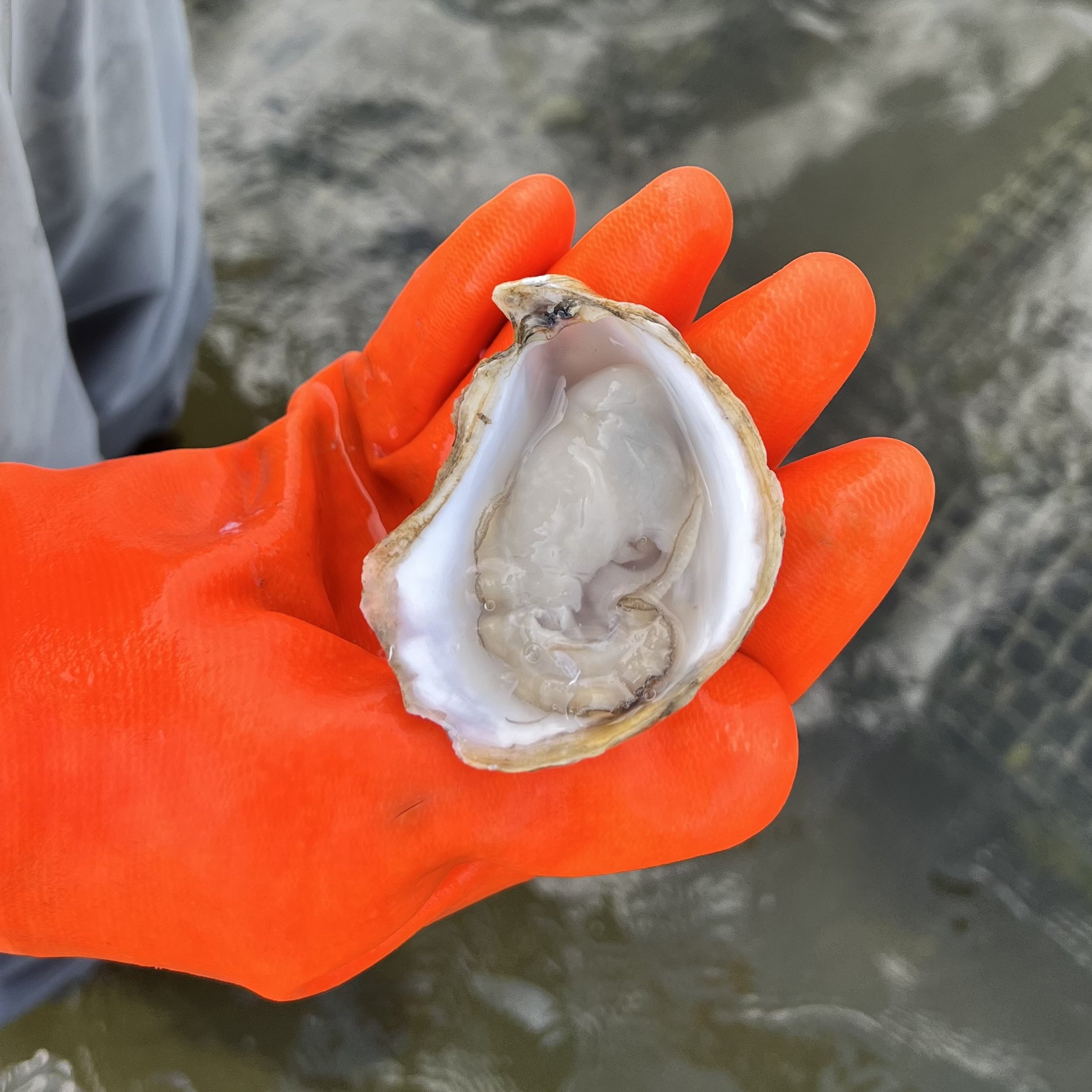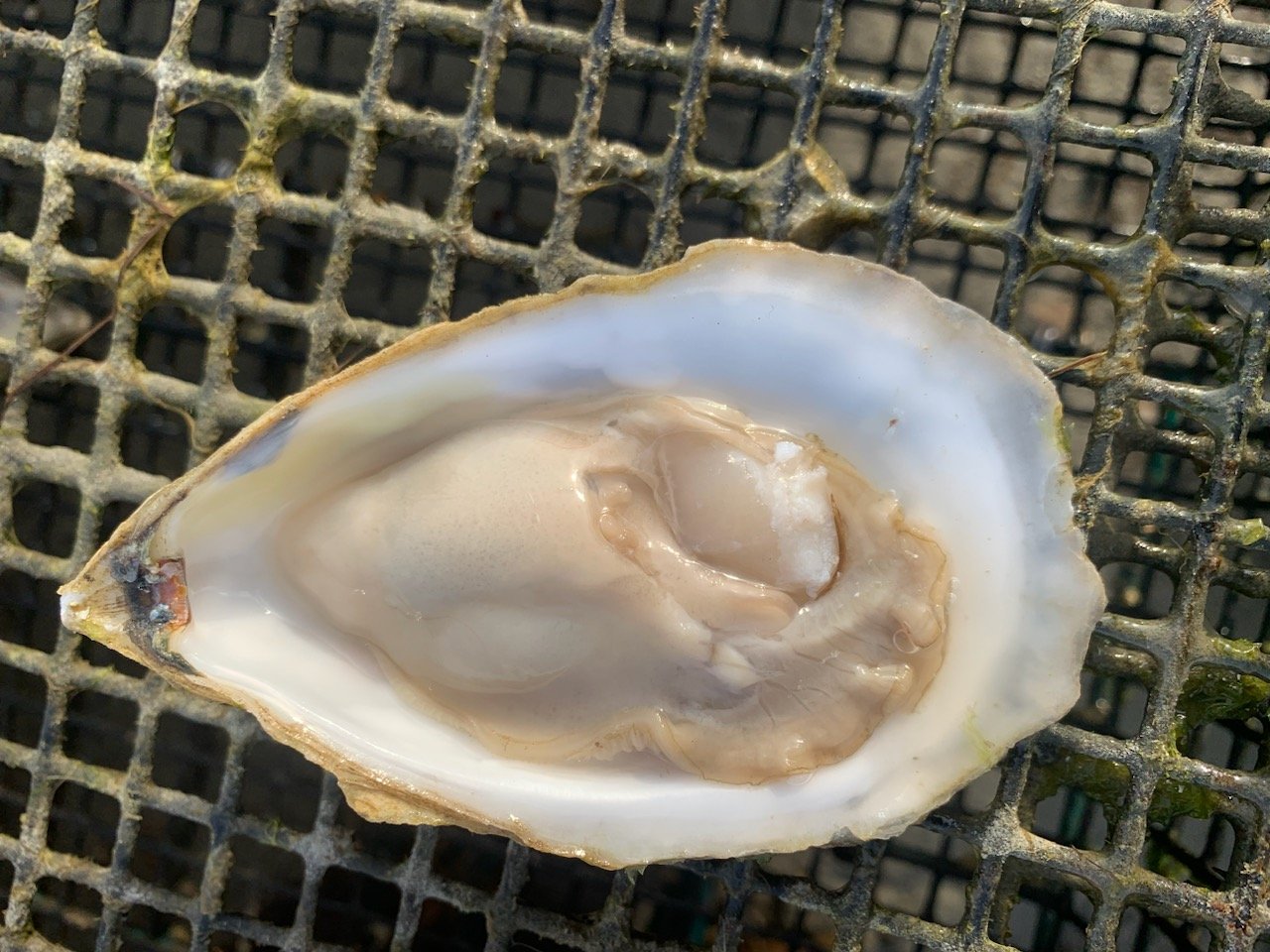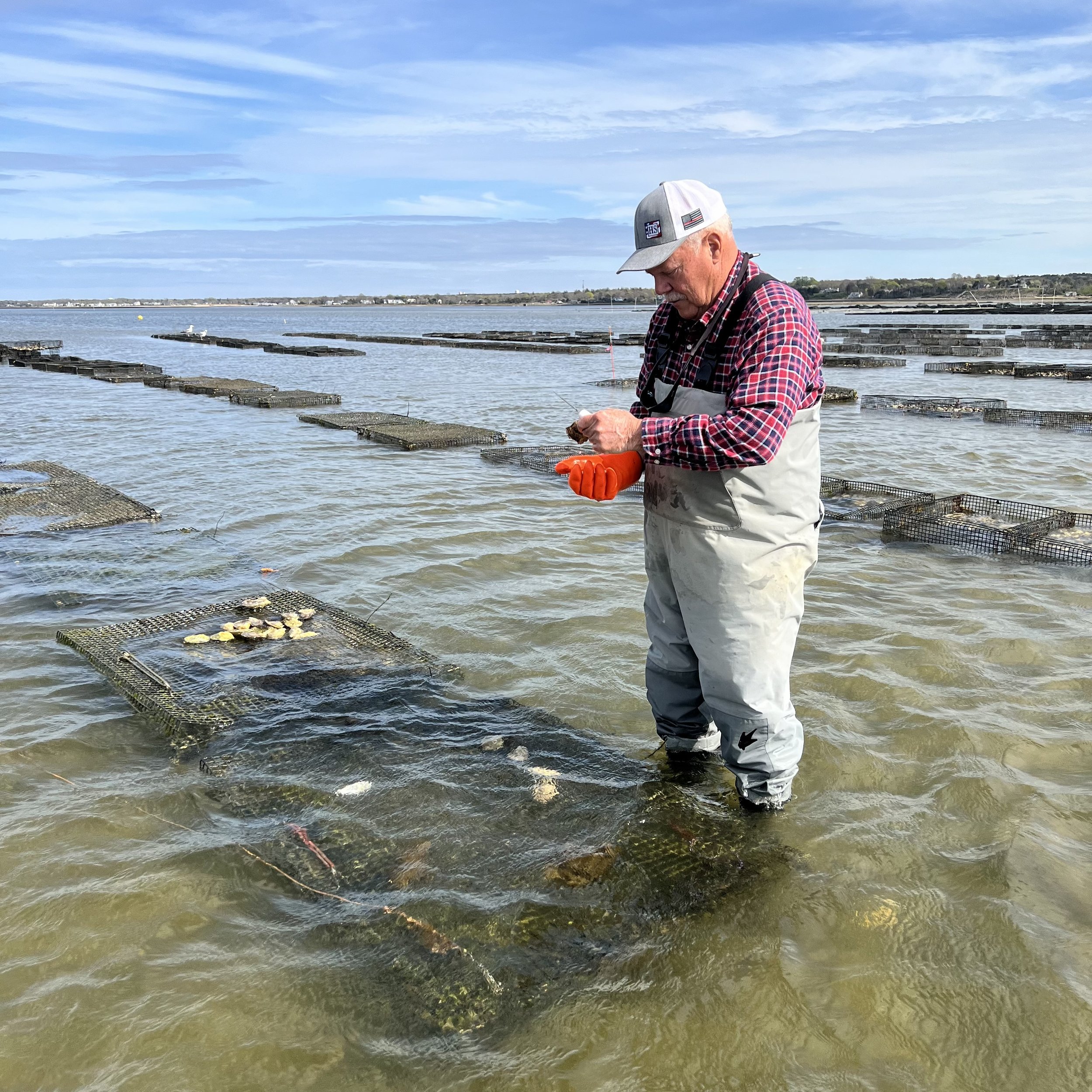A Trip to the Farm: A Shucking Good Time
A quality Beach Point oyster, highlighting its plump tan flesh and pearly white, deeply cupped shell.
The salt spray peppered my face as we wound our way through Barnstable Harbor on Mark Begley’s work boat. The sun was shining and it was 70 degrees on an early May afternoon. There wasn’t a place I’d rather be.
I’d met Mark at Barnstable Harbor a little before low tide. The plan was to get a tour of his shellfish farm and find out what makes his oysters special. Zipping across the harbor under the shadows of the Sandy Neck dunes, Mark gave me the rundown on the history of aquaculture in the area and the locations of the various operations. What I was about to learn is that beneath the waves of Barnstable Harbor, there’s a whole lot of farming going on.
View from the boat as we motored past the dunes of Sandy Neck to the north.
Arriving at the farm there was still about two feet of water over the flats, but the place was buzzing. A small flotilla of boats was tending to the various aquaculture lease plots. To the south, three fishermen - a man and two women - raked and sorted quahogs. Stretching to the east and west one could see the rebar from submerged oyster trays poking through the waves. Mark’s farm was on the north side of the flats, right on the edge of the channel where a strong tidal current washes over his plot. Here he farms oysters and butter clams.
Setting anchor at Mark’s aquaculture lease site. Neighboring sites are visible in the distance to the southwest.
“Today is not a swimming day” Mark told me as I stepped over the boat gunnel. I understood - the air may have been 70 degrees, but the water still held its winter chill. Splashing down, I could feel the cold current through my waders as it washed over my legs. We walked the line of oyster trays, stopping every few to inspect their contents. Raising a tray, a couple of green crabs scattered into the corners. I grab one, smash it, and toss it to the tides. These invasive species are a nuisance to the oyster farmers. Between traps and the help of seagulls, Mark and his team are able to keep the crabs at bay.
Mark holding up one of the green crab traps installed on the farm.
Talk shifted back to the oyster. In his soft-spoken demeanor, Mark describes what makes a good oyster shell - robust, clean, colorful, and well shaped. Reaching into a tray he grabs an oyster and pridefully holds it up. It's tan with purple stripes, deep-cupped, and tear-dropped shaped - it was beautiful - a specimen of near perfection. He shucks the oyster and moves the meat aside with his knife. The inside shell of a quality oyster will be almost pure white - the consummate serving platter for the main course.
The outer shell of a Beach Point oyster highlighting its beautiful, purple striations.
Mark shucks another oyster and hands it to me. Now he’s focussed on the meat. “This is a good oyster. Plump, and light tan in color.” I slurp it down. It’s sweet with a creamy, briny finish. It’s nature’s culinary translation of Barnstable Harbor. It’s clean, and it’s delicious.
A nearly perfect Beach Point oyster.
The taste of an oyster is a combination of the location it was grown and the care that goes into growing it. The amount of care that goes into culturing these delicacies is evident. Mark and his team are out 4 to 5 days a week tending to the plot, weather permitting. “Seventeen degrees is my limit in the winter,” Mark states matter of factly. On the flats, they pick through each tray removing marine growth and potential predators. They also swirl the oysters by hand to ensure optimal growth with respect to both size and shape. This is no set-it-and-forget-it operation.
Opening another oyster he points out the telltale signs of mudworm (Polydora websteri) - a tiny, naturally occurring marine worm that lives inside oysters and other shellfish. Faint dark brownish stains ringed the shell - these were the mudworm ‘blisters’. The worm isn’t harmful to humans, or necessarily the oyster, but blistering of the shell will affect the marketability of the oysters, and something Mark works hard to avoid.
An oyster showing the presence of mudworm. Several tan mudworm ‘blisters’ are evident around the marginal edge of the shell. Mudworm is normally occurring and not harmful, but causes the noted shell discoloration shown in the picture.
Mark markets his best oysters under the Beach Point Oysters brand. These oysters are hand-selected for quality and market size. The grow-out time for most of the Beach Point oysters is about 12 to 18 months, though there are a few trays of jumbos that may have been soaking in the harbor upwards of 3 or 4 years. That’s a lot of days on the water. A lot of hard work and perseverance. And a lot of good luck. In addition to the threat of predation and disease, the oyster farmer is constantly working the elements - the wind, the ice, the cold, the heat - all factors that could ruin a harvest. Every oyster tells the tale of the seasons on the flats of Barnstable Harbor.
A tray of young oysters.
As we motored back to the harbor I was feeling grateful for the opportunity to visit Mark’s farm. The weather certainly helped, but so too did the company and cuisine. I have a new appreciation for shellfish farming and the work that goes into bringing this bounty to table.
Out on his Barnstable Harbor shellfish farm, Mark is shucking and preparing to enjoy the fruits of his labor.









